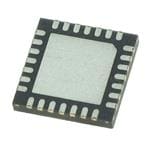A rear vision system greatly improves a driver’s field of view, allowing one to see the area surrounding the rear of a car that would otherwise be impossible to observe with standard automotive mirrors. A rear vision system can be extremely complex, incorporating cutting-edge image processing algorithms and hardware, or alternatively can be of relatively simple design. A basic rear vision system consists merely of a rear-facing camera to capture video, and a dash-mounted touchscreen to display it.
As simple a concept as this may be, rear vision systems have the potential to help save many lives each year by preventing back-over accidents. Indeed, this fact has recently been recognized by the United States government as part of the Cameron Gulbransen Kids Transportation Safety Act of 2007, which requires all new vehicles (beginning in 2014) to offer a substantially widened field of view – something accomplished most practically with a video-based rear vision system.
Major subsystems include:
Processor: Automotive applications are inherently safety-critical, so the processor or microcontroller must offer a level of performance that is high enough to ensure reliable, real-time information. In addition to its ability to execute code rapidly, the MCU is also chosen for its application-specific integrated peripherals. A microcontroller used in rear vision systems may include an integrated TFT display driver, parallel data interface (PDI) for video input, DMA controller, and large on-chip memory.
Connectivity: Being the de facto standard for high integrity serial communications, an automobile’s CAN (Controller Area Network) bus forms the “backbone” of the vehicle network. CAN is meant for applications that have to communicate numerous but small pieces of data consistently among nodes, as well as self-diagnose and repair data errors. Likewise, LINs (Local Interconnect Network) handle network communication within a node. Inexpensive and relatively simple to implement, a LIN network uses a broadcast topology with a single master – typically an MCU – and up to 12 slave devices.
Power Management: Rear vision is only a small fraction of a vehicle’s electronics system, which often includes stepper motors, one or more MCUs, external memory, CAN/LIN networks, LED backlighting, etc. – all of which may operate at different voltage levels. With so many different power rails, careful consideration is required when designing for efficiency, compactness, low cost, and low EMI. Low-dropout (LDO) regulators can be particularly useful for instances of heavy loading, such as when engaging an electric starter.





